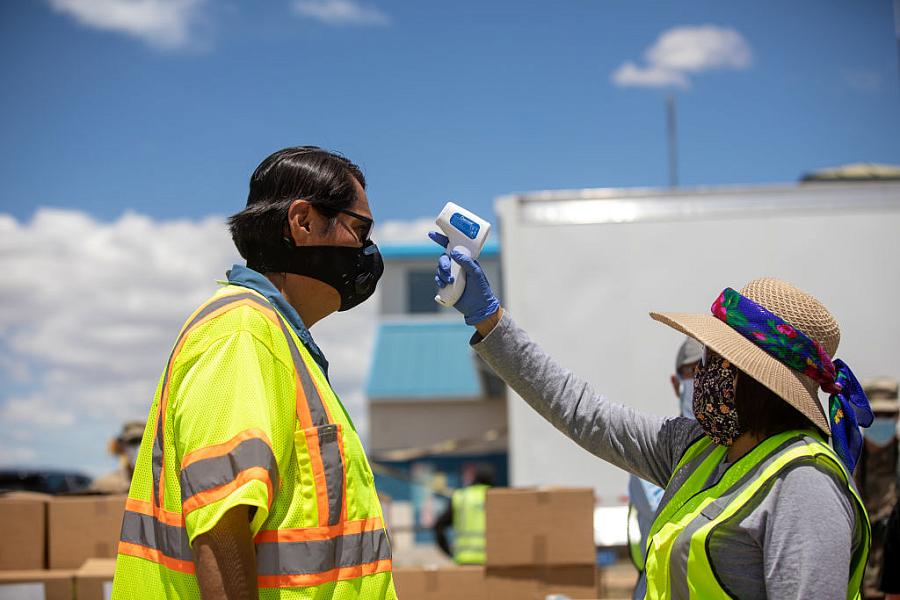Untangling how past met present in Indigenous communities during COVID-19

(Photo by Sharon Chischilly/Getty Images)
In May 2020, El Rancho received perhaps the most attention it’d had since John Wayne came to town. The leather-and-quilt adorned hotel in Gallup, New Mexico adorned covers of national newspapers, its sparkling neon signs catching the eyes of readers thousands of miles away.
But this time, its fame was for far graver reasons than when it played host to the movie star as he shot his spaghetti westerns. The pandemic was tearing through town, spreading rapidly in families, overwhelming the two local hospitals, and killing Navajo elders who were the pillars of their communities.
Reporting over the ensuing weeks described a plethora of reasons that Navajo peoples were susceptible to the virus. Multigenerational housing, which turbocharged the spread of the virus between family members. The lack of running water, which made the comprehensive prevention steps recommended by the CDC infeasible. Extinguished supply pipelines, which made acquiring masks and gloves and hand sanitizer at the local Walmart impossible. Systemic poverty, caused by decades of resource and talent extraction along with corporate exploitation, which made buying any of that stuff an exercise in sacrifice. And so on.
However, the health care system — or lack thereof — in Navajo territory received less attention. The much-maligned Indian Health Service, or IHS, was not offering interviews amid the surges — and employees who spoke out were threatened with retaliation. Likewise for the local hospitals, which have been historically riddled with embezzlement and corruption.
Additionally, less attention was devoted to understanding the underlying conditions that are often poorly documented due to substandard electronic medical records in these facilities — or because members of the community simply decided that since these health care systems were failing to serve their interests, they were going to stay away. In the fog of the early pandemic, a paucity of access and data made these lines of investigation either impractical or impossible.
Accordingly, this investigation supported by the 2022 Impact Fund for Reporting on Health Equity and Health Systems will seek to illuminate the potential connections between these underlying conditions, the state of the health care system designed to care for them, and the severity of COVID-19 in Indigenous communities.
I’ll analyze how a history of colonialism, exploitation, environment injustice, and political neglect manifested in illness rather than health. And the reporting will aim to evaluate how these health care systems have failed their mandate, potentially leading to a recurring theme in American history: the undue death of Indigenous peoples.
Moreover, since Indigenous issues have been chronically underreported at the national level, this investigation will broaden the lens beyond short time periods and single larger communities alone. It will seek to elevate the voices of those speaking to decades of historical context and injustice — from Navajo, but also from smaller tribes such as Laguna, Acoma, and Hopi, who too often struggle to find a platform to speak their truths.
Finally, following completion, the project will be distributed back to the community, through deliberate efforts to partner with local media for co-publication or syndication. Accordingly, the investigation will also serve a pragmatic purpose as a form of public service journalism, empowering community members to self-advocate in ways that can close these gaps in health outcomes moving forward.

